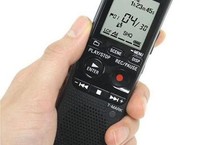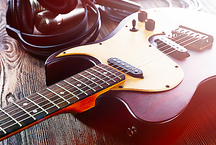
- What are synthesizers?
- Which firm is better?
- How to choose the right synthesizer - 10 important characteristics to choose
- Which synthesizer to buy - new or used?
- How much does a good synthesizer cost
- Personal experience
Music is compared to the voice of the heart, called the string of the soul, the composers dedicate their whole life to it, their greatest works are still alive today. Epochs replace each other, and music is eternal ...
And only musical instruments have changed significantly, and they continue to improve, trying to keep up with modernity. One of the most remarkable discoveries of our days, perhaps, can be called a synthesizer. Talking about it deserves, if not an entire book, then a separate article. A large number of buttons, switches, levers and displays create the impression that it is impossible to deal with this ever. However, it is not. Everything is much simpler.
Where to begin? Do you really need a synthesizer?
I want a synthesizer! Is the synthesizer really? Or maybe a digital piano? What is better for beginners? What is it, a tool for professionals? Choose only among the new ones or is it worth considering the used option?
Start choosing a synthesizer with the definition of the destination. It all depends on what you need the tool for. Experts recommend to think over the functions in advance so that the purchase does not become an expensive toy with unused potential.
For example, a synthesizer in order to learn how to play will differ significantly from the synthesizer necessary for working in a musical group. A disco DJ will need a completely different tool than to have fun spending time with friends with music, and deep study and creation of music (followed by recording and editing it) will require a professional model, an entire workstation.
What are synthesizers?
The assignment divides the synthesizers into:
♦ Educational (with the learning function and, for example, with a very useful and important chord vocabulary (Chord book));
♦ Interactive (with auto-accompaniment function - reproduction of rhythm and accompaniment, which the performer complements with his playing);
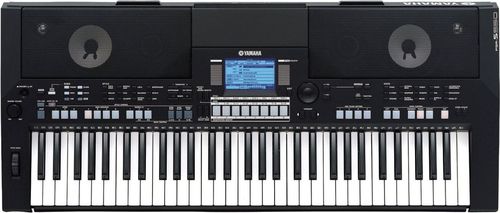
♦ Performing (without auto-accompaniment function). Used to play parties in ensembles;
♦ Digital pianos (outwardly, they are very similar to the synthesizer, only the digital piano has an imitation of the hammer system (the keys must be pressed with the same effort as in a regular acoustic piano)). A digital piano is worth buying, for example, if you need to replace the “ordinary” with a less bulky and more convenient instrument, the same role in a synthesizer is much more significant. It is worth noting that it is imitation of hammer mechanics that significantly increases the cost.
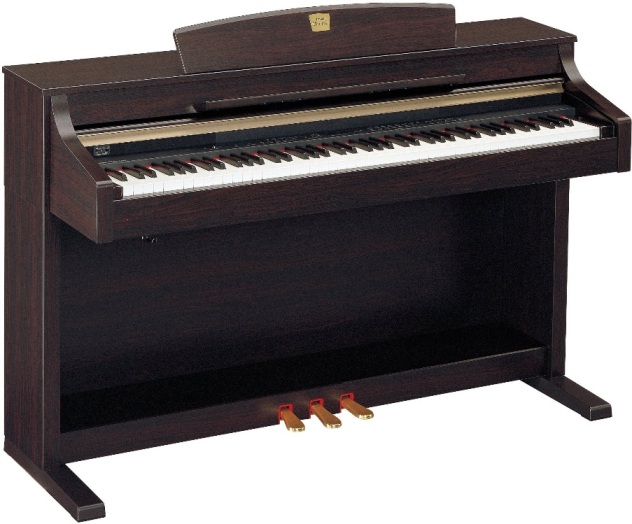
♦ Workstations (multifunctional systems for creating, editing, recording individual sounds, chords, melodies, parts ...).
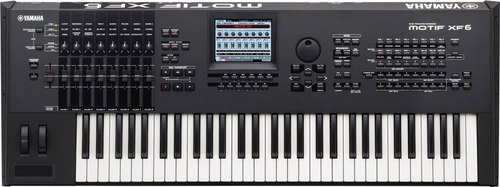
Photo: dstn.org
Which firm is better?
A lot depends on the manufacturer in synthesizers. By purchasing a tool from an unknown one-day firm, you risk spoiling your hearing or very quickly run into a breakdown problem.
For home use it is better not to find Casio and Yamaha. By the way, not everyone knows that the Yamaha company, which produces motorcycles, boats, snowmobiles, boat motors and jet skis, began with the creation of an organ (it was the keyboard instruments that gave it a start in the world of big business). In addition, metal and plastic for musical instruments undergo the same technological processing as materials for boats, so Yamaha synthesizers are considered among the highest quality.
For stage performances and studio work, sound synthesizers are produced by such respected companies as Korg, Kurzweil, Roland, very good and inexpensive instruments by the Chinese company Medeli.
Rating main manufacturers of sound quality:
1. Korg, Kurzweil
2. Casio, Yamaha
3. Medeli, Worlde
In continuation of the topic - Ranking of the best synthesizers for beginners and professionals
Next you should familiarize yourself with the most important characteristics of synthesizers.
How to choose the right synthesizer? 10 important characteristics to choose from
1. Key size. There are standard, mini and even micro options. In order for the hand to get used to normal sizes and not need to be retrained later (and this, believe me, is definitely much worse than learning first), experts recommend buying tools with standard-sized keys (even for children, especially after 5 years).
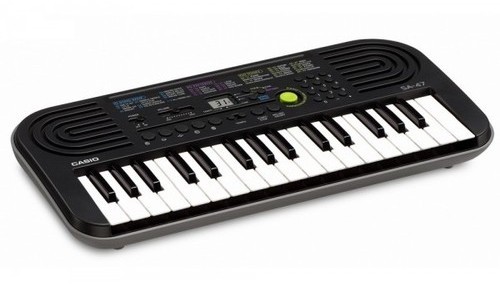
Photo: rockstyle.me
2. The number of keys. The standard is 88 pieces (7 octaves + 3 more keys). Due to the fact that the entire range is used in rare cases, other formats have been introduced: 61 keys (5 octaves), 73 keys (6 octaves), 76 keys (6 octaves + 3 more keys), and 88 keys for fans of traditions. You can also find 49 keys, but, as practice shows, this is not enough for the realization of the majority of creative ideas.
It should be noted that if the number of keys is less, it does not mean that the synthesizer is deprived. The disadvantage is compensated by “transforming” (by shifting the keyboard up / down by the required number of octaves).
3. The activity (dynamics) of the keyboard. In a passive keyboard, the volume of the sound does not depend on the force of pressing the keys, but in the active (dynamic) version, both the volume and the timbre tone of the sounds will depend on how you press. Experts recommend giving preference to the second option. This feature is usually called “Touch Response”.
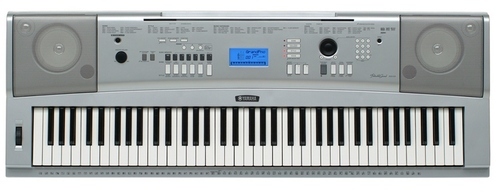
Photo: c.avsim.su
4. Polyphony. This concept reflects the number of sounds simultaneously played by pressing a single key.
For example, if you play only a melody, polyphony = 1, but if you want to add each keystroke with drums, bass, chord (out of four sounds, for example) and something like accompaniment of a rhythm guitar, you will need a polyphony equal to 8 .
And if you suddenly want to take advantage of effects, such as chorus, harmonization, giving the sound some additional sound or spatial effects, such as, for example, reverb, echo? And still a margin so that the tool does not “choke”? According to the recommendations of experts, synthesizers with polyphony below 32 should not be taken. This is the case when the more the better!
And the standards are as follows: 24, 32, 48, 64, 128.
5. Manufacturing company. This criterion is usually indicated at the end - but in this case it is very important.
6. The number of sounds (timbres) and rhythms (styles). Practice shows that more than 40 timbres and styles are used quite rarely. However, in order to choose what exactly you will like and what should be preferred over time, there must be a wide range: at least 100 rhythms and 100 sounds.

7. Sequencer (multi-track recording). You can play the synthesizer in three ways: you can choose some instrument (guitar, piano, saxophone) and play the melody, you can complement the main theme with styles built into the synthesizer, and you can prescribe the tracks and then synchronize the recording (for example, you have played the piano , then put on a bass drum, then a bass guitar, and so on).
All this makes the sequencer, which is three times stronger than the synthesizers without the recording function. Standards for sequencers are:
• 1 track;
• 2 tracks;
• 6 tracks;
• 17 tracks.
An important characteristic of a sequencer is memory, which is usually expressed in the number of notes that can be stored.
There are no recommendations here. The more droke, the greater the cost. Choose according to your needs.
8. Full training. We have item number 8, but if we are talking about buying a synthesizer for children, then this item should be number 1! Of course, nothing can replace the “living” teacher, but the child will have plenty of impressions! Modern synthesizers can be equipped with systems that even give estimates.And the fact that any children's holiday will be held with a bang, do not hesitate. The most effective (other things being equal) will be the option with built-in key illumination.
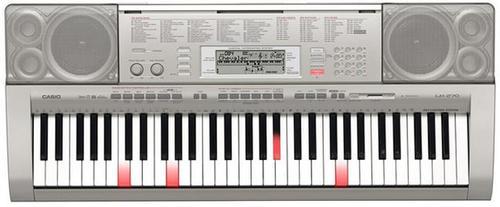
9. Availability of external storage devices. Connectors Music is created. It will be very convenient to immediately record it on a USB flash drive or SD cartridge (these are built-in slots, you should not confuse them with USB ports, which are available in almost every modern synthesizer, a convenient thing to connect, for example, to a computer). It is worth paying attention to the connectors for connecting other external equipment - pedals, headphones or sound-amplifying equipment.
In addition, advanced digital synthesizer models are equipped with multi-page menus and an operating system with the ability to update.
10. Optional accessories. What else might be needed?
• Instead of buying a whole synthesizer, you can limit yourself to buying a so-called MIDI keyboard — these are keys for controlling virtual synthesizers on a computer. By the way, a much cheaper option (an average of 5 thousand rubles).
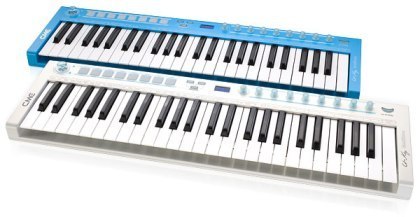
• If you are going to not only play, but also sing, then choose a synthesizer with a vocoder function.
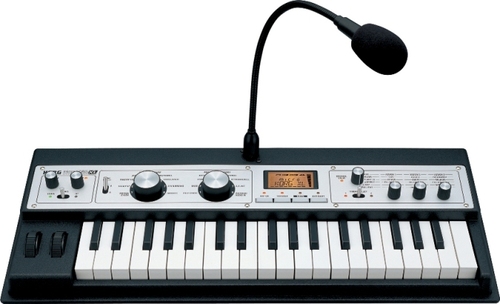
Photo: dstn.org
• A power supply may be needed (usually sold separately).
• Stand. It can be ordinary (with one X-frame) for light synthesizers and enhanced (with two X-frames) for heavy instruments, single-level and two-level (for 2 synthesizers).
• Pedals. Will be required if you need to play like a piano. There are pedals "sustain", increasing the duration of the after-sounding and pedals "loudness" for volume control.
• Keyboard combo - special portable volume-increasing sound reproducing system. It is used mainly in studios (at home, the volume of the sound reproducing system built into the synthesizer is enough).
• A cover for keys is used when transporting a synthesizer (selected to the dimensions of the synthesizer).
Which synthesizer to buy - new or used?
It is worth considering the option used?
If you plan to buy a good synthesizer, you should pay attention not only to new models, but also to used ones. Why? An example from personal experience. The tool was needed to play at weddings, and this is from summer to winter itself, and the wonderful, bought from the hands of the Yamaha PRS 2000 has never failed. Then it was replaced by the old Roland E16 key acquired from a friend. Released several decades ago, and still plays!
What to look for?
What to look for, so you are also lucky with the used synthesizer? First of all, on serviceability. As a rule, the electronic component fails rarely, but there can be problems with pressing keys and buttons. Check this question carefully (push / bounce / sound). Sometimes it is necessary to replace the gum (they are crushed, abraded, torn), in principle, the procedure for replacing them is quite simple (you will need only a cross and a small flat screwdriver). Do not want to bother with it - do not buy, but at this you can well bring down the price!
How much does a good synthesizer cost?
About prices and specialization
The price divides the synthesizers into budget (up to $ 1 thousand is considered) and professional (more than $ 1 thousand respectively) models.
Moreover, synthesizers are specialized (digital piano, vocoder synthesizers, models with the function of virtual analog simulation, performing synthesizers, classical workstations) and universal (with auto accompaniment, interactive, arrangers).
Illustrative example
Tip: before you go to the store for the synthesizer, look on the Internet for the model you need in advance, carefully read the descriptions, instrument characteristics (you already know them) and compare different models!
For example:
1.Kid training synthesizer CASIO LK-120 (LK120). The average cost is 7500 rubles.
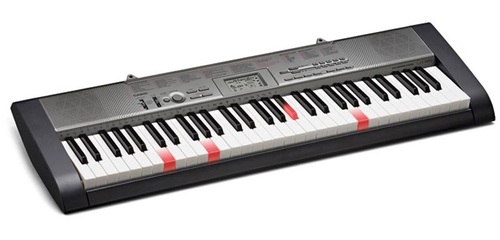
Photo: casatejera.com
Characteristics: key backlighting, step-by-step learning (100 learning melodies), 61 keys, 100 timbres, 12-note polyphony, 50 rhythms, LCD display, 2 speakers of 2W each,
2Semi-professional synthesizer CASIO WK-220 (WK220). The average cost is 13,500 rubles.

Photo: pop-music.ru
Features: 76 touch-sensitive piano-type keys, 600 built-in timbres, 180 ready-made styles, 48 note polyphony, 6-track sequencer, chord learning, audio input, sampling (5 sounds + 3 percussion).
Personal experience
In conclusion about how I chose the first synthesizer (as a gift to my daughter for my birthday). First, I learned what important characteristics he had, then compared them for synthesizers of their price category in online stores. I opted for the three most appropriate models.
The next day I went to a real store of musical instruments. We have a small city, only two of the three selected turned out to be. Played on everyone! It turned out they have a completely different sound!
As a result, I purchased a more expensive tool than I had planned at the beginning, besides, it turned out to be not at all one of those I had chosen in the online store. Most of all in terms of melody and sound quality, this one attracted:
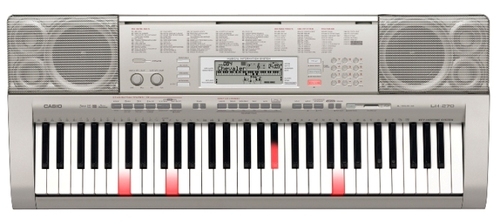
Photo: dstn.org

